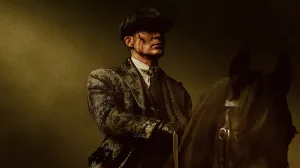Dungeons & Dragons has released two dragon-themed subclasses for public playtesting. Early today, Dungeons & Dragons released a new Unearthed Arcana playtest for the Way of the Ascendant Dragon for monks and the Drakewarden for rangers. The two new subclasses both focus on forming deep bonds with dragons, either by mimicking their draconic might or by forming a bond with a drake, a weaker form of dragon. The Drakewarden, in particular, seems like an upgraded Beast Master Ranger, with some particularly cool abilities focused on damage dealing.
Videos by ComicBook.com
The Way of the Ascendant Dragon’s two core features are the ability to imbue unarmed strikes with draconic power, thus changing damage type to match that of a dragon’s breath weapon, and to convert ki into a breath weapon, with damage based on a monk’s martial arts die. At higher levels, the Ascendant Dragon monk gains the ability to temporarily manifest draconic wings, thus giving them a flying speed, and to create an aura that grants any friendly creature inside of it resistance to a type of damage (picked by the monk when the aura is created) and the ability for allies within the aura to use their reaction to make an attack when they take damage. At 17th Level, the monk also gains blindsight, the ability to deal recurring damage with their breath weapon, and the ability to use their aura as an Area of Effect attack when it is first unleashed.
The Drakewarden is a modified version of the Beast Master Ranger, built around giving the ranger a Drake companion. Players can use their bonus action to command their drake to take an action, and the drake gains a damage immunity to either fire, cold, lightning, acid, or poison. Eventually the drake gains the ability to either swim or fly, and at 11th Level, both the Drakewarden and the drake gain the option of using a breath weapon attack once per long rest. When the ranger reaches 15th level, the drake becomes a large creature (which means that the ranger can ride it) and deals extra damage. In addition, the ranger may use their reaction to gain temporary resistance to damage when either they or their drake is attacked.
Both classes seem pretty cool, but the Drakewarden has the potential to become an instant favorite of players. Who wouldn’t want the ability to bond with a dragon and use it in combat?
You can check out both subclasses on D&D’s website.








